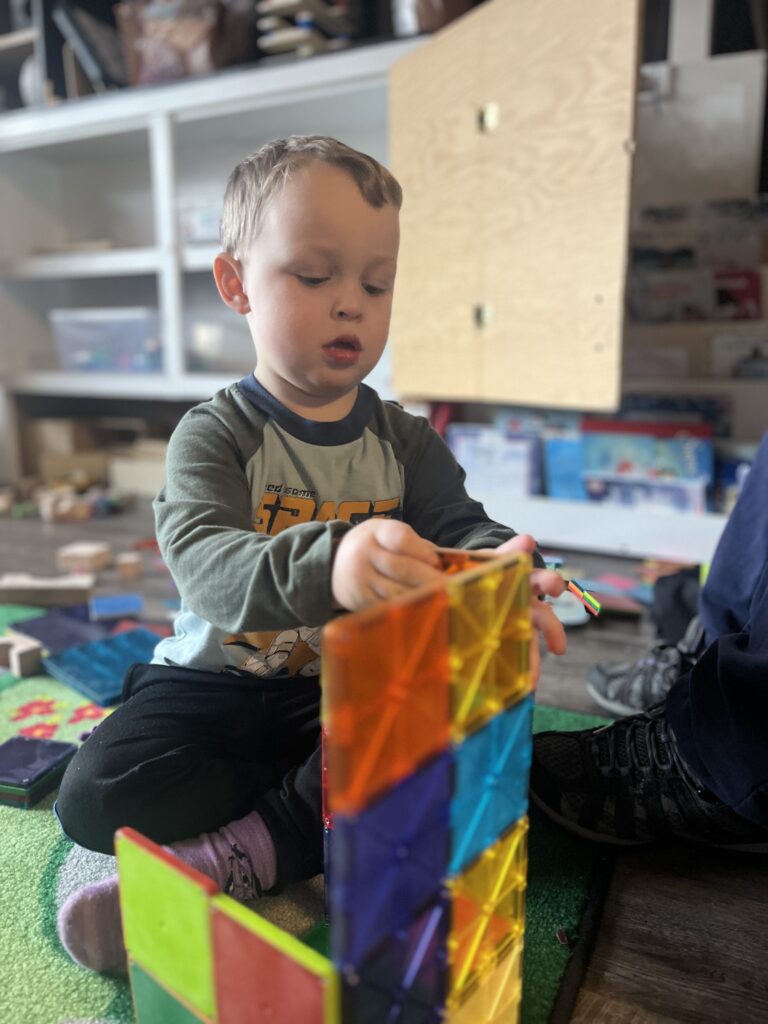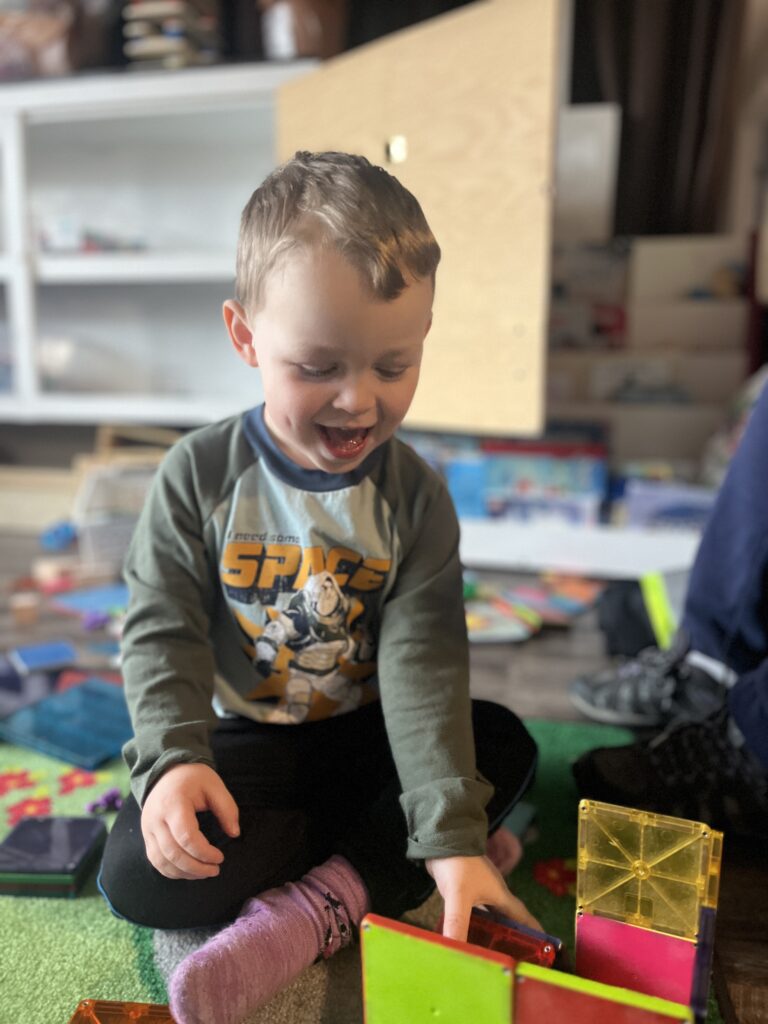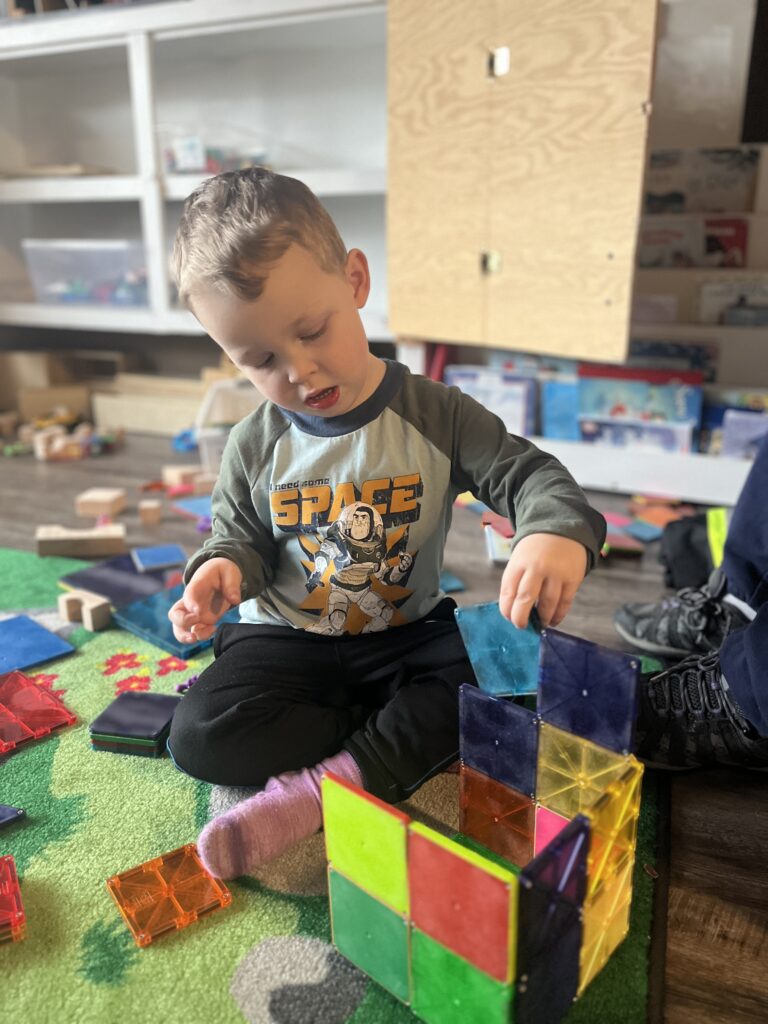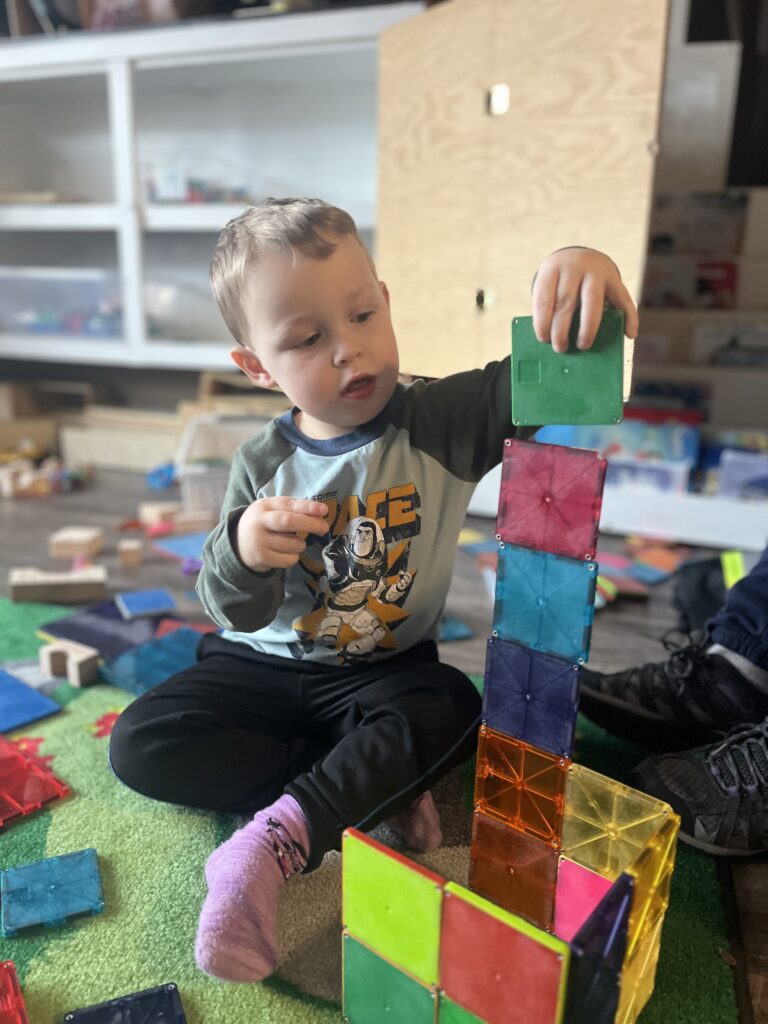The magnetic tiles are one of the favourite toys of the older children in the group. Today, however, little Ben wanted to give a try.
He started to pile the tiles vertically upon a base that had been built by another child. Christine reminded him to start with the corners to have stronger structure and showed him how to do it, and he followed until the tiles collapsed. He was not bothered by it and all, and he laughed out when he saw the tiles falling down. It seems like he was not looking for a solid structure, but a more interesting structure that may cause the tiles to crash. So he continued with the tiles, stacking them in twos on one side, see them collapse, and tried again by stacking them one by one until they collapsed again.





What is the child looking for in this exploration? Are we too eager sometimes to “teach” them what we think that they should be learning, instead of allowing them to explore what they are looking for?
I choose to document this moment because it made me think about one of my definitions of learning, that it is proactive and interest-led (mentioned this during our seminar on January 15, 2024). In this situation, Ben was not interested in building a house-like structure like other children, so teaching or showing him how to make the tiles more stable did not seem to work.
However, I would not say that it was pointless to “teach” him to build the structure, as teaching is sometimes spontaneous. What’s important here is to really engage with the child and figure out what the child is working on, and then adapt to it, just as what Christine was doing. Once she found out that Ben was interested in the falling, she did not insist on the structure building.